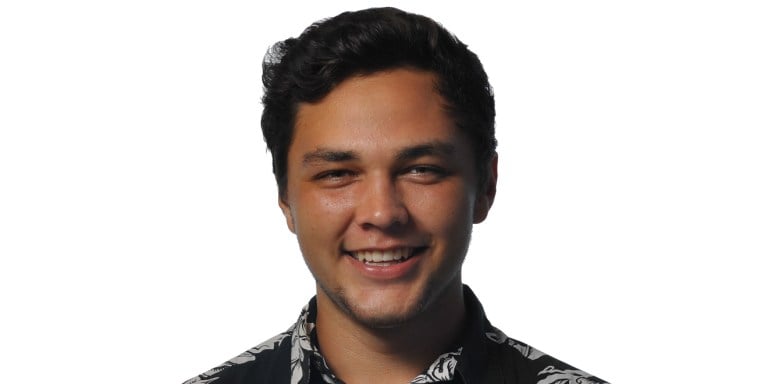This column reflects the opinion of the writer and does not in any way reflect the views of The Stanford Daily.
On Thursday, the NBA will reveal its all-NBA first, second and third teams for the 2016-17 campaign, and with the unveiling, the futures of both the Utah Jazz and the Indiana Pacers franchises hang in the balance, and to me, the overarching media control over professional athletes contract salaries and franchise roster flexibilities is absolutely baffling in the modern NBA.
Essentially, the whole issue stems from the newly negotiated NBA Collective Bargaining Agreement (CBA) that details a new class of player contracts dubbed the “Designated Veteran Players.” The qualifications for this new category of players center around two main subjects; first, the upcoming player must either be entering their eighth or ninth NBA season (or just completed his ninth in the case of free agents) with the team that drafted said player or acquired said player in a trade within his first four years of NBA experience.
Secondly and more contentiously, the player must either have completed one of the following performance qualifications:
1) Made one of the three all-NBA teams in either the previous season or the prior two.
2) Won Defensive Player of the Year in either the previous season or the prior two.
3) Won MVP in one of the previous three seasons.
Outside the theoretical and regarding the real-world implications, this new category establishes another tier of max contract for the top NBA players up for contract renegotiations, increasing these players’ potential salaries up to 35 percent of the salary cap from the prior tier two player salary cap of 30 percent.
Ultimately, this means that in this upcoming free agency, Jazz forward Gordon Hayward and Pacers icon Paul George are waiting to see whether the two will make substantially more money. ESPN senior writer Brian Windhorst wrote earlier this season, “If a player is voted to the all-NBA team and has eight or nine years of experience, then he qualifies for a special exception to sign a massive contract with his team for about $75 million more than any other team can pay him.”
Beyond the player’s financial future, the special contract intricacies affect the franchises who now are at the mercy of these qualifications and ultimately shackling the team’s front office who face a choice between a rock and a hard place when considering the impact of resigning these specially designated players.
For instance, Utah failed to renegotiate a long-term extension for their biggest offseason pickup last season, guard George Hill, due in large part to concerns about the team’s roster future if the organization decides to lock down over $80 million in cap space for the upcoming season. With Hill being offered max contracts from teams with cap room to burn (i.e. the Brooklyn Nets and the 76ers), the Jazz now are locked in a conundrum created from the very rule aimed at helping small market teams retain superstars.
And if the player, such as Gordon Hayward this offseason, fails to make the All-NBA team, then any team with the capability around the league can match Utah’s max offer sheet at 30 percent the cap space. Essentially, if Hayward doesn’t earn this relatively innocuous award, the superstar youngster will surely opt out and test waters in unrestricted free agency, where an exit for nothing in return would surely cripple the Jazz’s future situation.
What’s baffling to me then is, with all the money and organizational future at stake, why the NBA – both league offices and players’ union – allows these monumental league decisions to be decided by a panel of sportswriters. Who in a right and sane mind would allot so much control to the media?
Honestly, any other resolution than the external media outlets controlling these arbitrary-turned-critical end of season awards that essentially decide large-scale changes in the future. From making the all-NBA awards computer automated and entirely statistically based to an unbiased committee impervious to connections with teams, literally anything seems better than resting this power amongst a group of media affiliates.
I immediately am remembered of a story from the former TrueHoop podcast in which NBA analytical writer Tom Haberstroh recounted a story of a player literally asking him for recommendations on his game after the ESPN sportswriter kept the player off his article featuring an early midseason ballot for the awards.
Let me repeat that: A professional basketball player, one of the best in the NBA (the highest echelon of basketball competition in the world), asked Haberstroh for tips on his game in order to make sure that Haberstroh voted for him for all-NBA at the end of the season. I guess $75 million in potential contract value would make me do the same.
Ultimately, this story shows just how ridiculous this process has become. While I’m definitely in the analytical camp of basketball fans and would enjoy a purely statistical representation of the all-NBA teams, any change in this rule honestly seems less ludicrous than what’s in place now. But until then, Thursday’s selection will see some organizations exalting with joy while others miss out on a chance at a superstar.
Contact Lorenzo Rosas to congratulate him on the Lakers drafting Lonzo Ball on June 22 at enzor9 ‘at’ stanford.edu.
